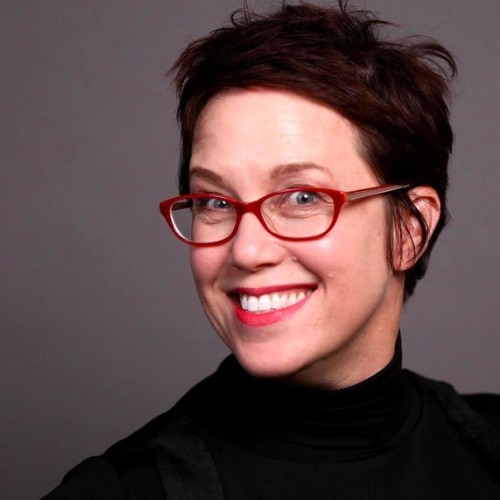One of the most common frustrations I've encountered while mentoring designers throughout the years is the constant challenge of being dictated what to design.
Do you recognise this scenario?
“Hey designer, can you quickly add this feature to this page?”
You find yourself in a position where design directives keep coming in—one after another. Occasionally, you might even propose design ideas, only to have them consistently blocked by stakeholders. As a designer, this can gradually lead to demotivation.
When this happens, either your stakeholder doesn’t understand that designers need to know about the business strategy, the organisation might be low in design maturity OR you're grappling with how to bridge the gap between design and business outcomes.
For designers to truly succeed, they must meet business partners halfway.
If you solely focus on design without acknowledging the business aspect, your impact might remain limited.
This means delving into the functions of other business units, and mastering the art of connecting business, design, engineering, and product. A crucial facet of our role is elevating the overall maturity level, and it all starts by enhancing your ability to measure value.
About seven years ago, I ventured into running my own business. This experience was akin to obtaining a real-life MBA. It dramatically transformed my perspective on how design integrates into the grand mechanism of business. Gaining business awareness empowered me to contribute more meaningfully in diverse meetings.That experience has completely shifted the way I communicate design to business partners and changed how business partners evaluate my design decisions.
It made me realise one thing: the concept of business acumen is barely being taught to designers. This knowledge gap drastically slows designers' career growth.
Overcoming the fear of business language
For many designers, the concept of business can be intimidating, as if it's an entirely different realm.
Initially, this notion can be daunting, reminiscent of learning a new language or navigating an unfamiliar system. The initial uncertainty can evoke fear and self-doubt. However, once you overcome these initial obstacles, your approach to design will undergo a profound transformation.
Remember, your design holds value only if it serves as a desirable solution for customers and generates outcomes for the business.
To become a more persuasive designer, there are three avenues through which you can embrace business:
- Gain insight into business models and your company's position in the competitive market.
- Understand how the business measures success.
- Grasp the art of connecting your designs with business objectives.
Let's delve deeper into each of these dimensions.
1. Gain insight into business models and market positioning
To get a high-level understanding of where your company plays and how it wins, you need to spend time to understand these basic questions.
- Who are the target customers of your company?
- What does your company offer of value to those customers? (delivering value)
- How does your company produce the offer? (creating value)
- Why does that offer generate value for the company? (capturing value/revenue/growth)
Before diving headfirst into designing outputs, establish relationships with your stakeholders. Help them understand that for you to excel in your role, learning about their strategy and business objectives is vital.
2. Understand how the business measures success
As a designer, the strategy your company chooses to gain a competitive advantage is important to your work. Of equal importance is whether your company is focused on growth or profit.
Generally speaking, startups are focused on growth in hopes of finding revenue models later, while established companies tend to be focused on profit while keeping an eye out for new growth opportunities.
For instance, consider a startup aiming for growth. Their KPI/OKR could revolve around customer acquisition as their initial strategy, with the goal of securing increased venture capital. Accordingly, the company's annual or quarterly objectives might include “Increase user acquisition by x%.” Key performance indicators could involve metrics like:
- Acquisition
- Conversion rate %
- Customer acquisition cost (CAC)
As a result, the design team in such a startup would focus on initiatives that enhance these KPIs.
Engage in dialogues with business partners and stakeholders to uncover key performance indicators (KPIs) that guide decisions. Identify metrics that reflect growth, customer satisfaction, or market dominance.
In my course, “Accelerate Your Product Design Career” I utilise the viability balance scorecard framework. This visual tool assists designers and stakeholders in aligning with company goals effectively.
3. Connecting your designs with business objectives.
With a shared understanding of the company's key objectives, the task at hand is to identify key design objectives that can translate design metrics into tangible business accomplishments.
If you look at this familiar Venn diagram
Our core responsibility is to create “desirability” for the product. So what defines “desirable”? If you ask 10 different designers, they’d probably give you 10 sets of different answers, some might include design jargons like:
“The design is accessible“
“Frictionless user flows”
“Easy to navigate Information Architecture”
While all of these are valid, they can be perplexing and seem subjective to non-designers. They might doubt whether these concepts can be trusted for decision-making. Although these tools are effective in design thinking, they may not directly demonstrate how enhancing user experience contributes to business objectives.
So how do we fix this problem?
Enter desirability mapping—a framework that aligns design initiatives with desirability using four core perspectives. This simplifies matters for business partners and offers a clear approach.
Desirability framework
Consider your company's annual objective of driving “Adoption.” Using this business goal as a foundation, navigate the desirability scoring framework. Work through key elements to determine how the team can foster “adoption.”
Starting from the top
- Host a workshop to explore “To drive adoptions, what are the things needed to be credible for the users to want to sign up/upgrade?” It could be safety, security
- Work your way down the list to the next perspective: “To drive credibility (safty, security… etc), what are the things that must create impact? It could be “a frictionless payment system, secure referral process)
- Apply the same process to identify key areas within each row that connects to the objective above
- Finally, establish connections between related items, ensuring they support the success of higher-business goals
This framework provides design teams and their business partners with clarity on where to focus their efforts to contribute to the company's overall success.
Ultimately, aligning everyone in the business to a preliminary understanding of desirability: a discernible, usable, impactful, and credible customer experience.
I also incorporate this framework in my course, “Accelerate Your Product Design Career.” If you're interested in mastering this approach within your team, the course is an excellent opportunity to do so.
Learn the non-design skills that are essential to propel your product design career forward
Remember that the fusion of design brilliance and business acumen is an evolving journey. The mastery of a product designer lies in the ability to craft experiences that resonate with business objectives, contributing not just to aesthetics but also to strategic value.
Designers with the most success in our industry are business-aware.
If you're a junior, mid-weight designer, or even a lone designer in a startup environment, seeking to transcend conventional design confines and escape the feature production cycle, your desire to make a more significant impact is commendable.
If you're unsure about how to go about it, I've developed the “Accelerate Your Product Design Career” cohort-based course. This program addresses the gaps left by traditional UX courses, equipping you with adaptable knowledge, frameworks, and scripts gleaned from over a decade of my career.
It's designed to empower you to influence design within your company, revolutionising your role as a designer.
Please note that this is a hands-on cohort-based course, accommodating only a handful of dedicated designers. With weekly live lessons, collaborative sessions, and bonus mentor calls, ideally suited for those dedicated to growth and transformation.
Space is limited to only 20 students per cohort. Apply to be in the next cohort:
ACCELERATE YOUR PRODUCT DESIGN CAREER
Latest.

How Creative Ops Leaders are driving value in 2025 and beyond
Industry Trends, Leadership

Accessibility as a Design Principle: Lessons from Telstra’s Digital Design Team
Thought Leadership, Design, Leadership, Digital Accessibility

Breaking age barriers: Why we must rethink work, age, and progress
Hiring Insights, Thought Leadership




